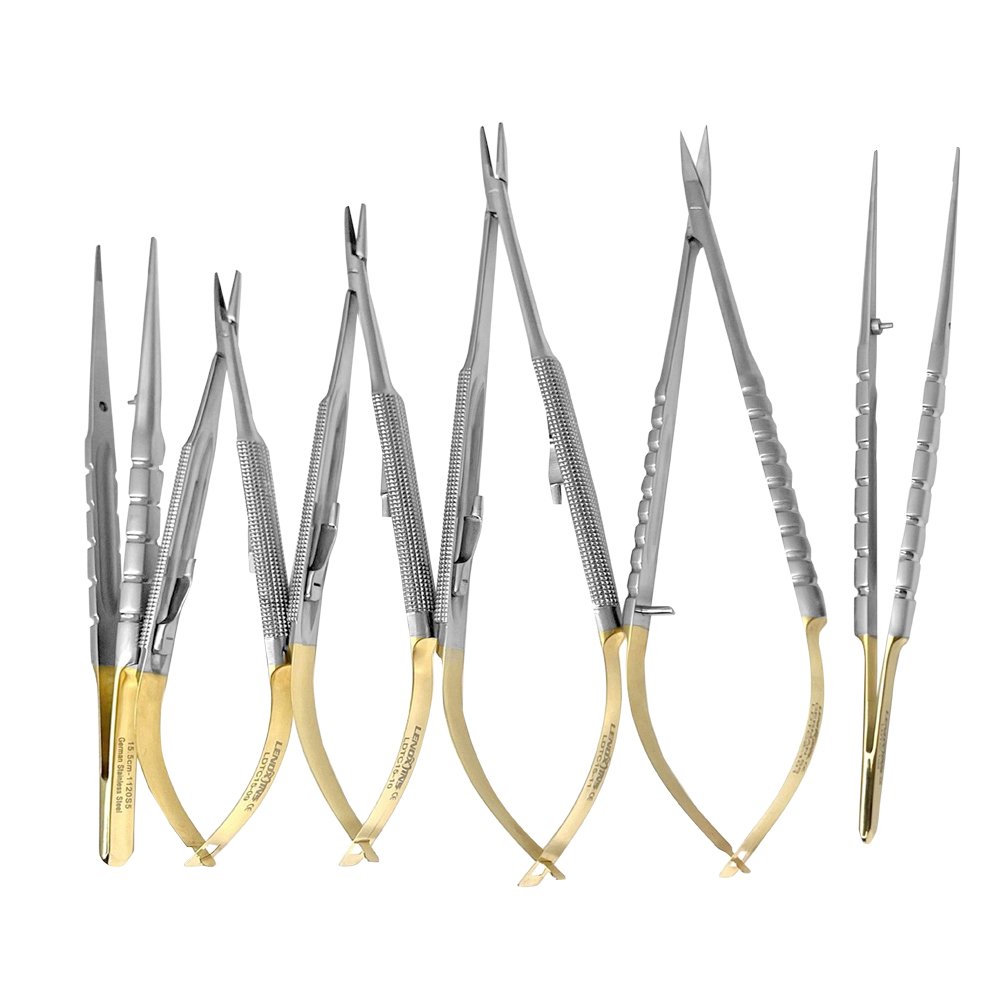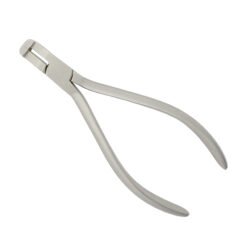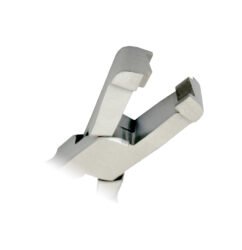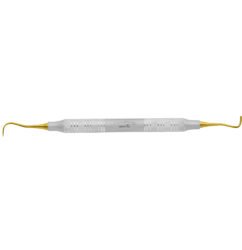Innovations in Pediatric Dental Instruments: Small Hands, Big Impact

Innovations in Pediatric Dental Instruments: Advancements for Kid-Sized Comfort and Precision
Innovation in pediatric dental instruments centers on tools and workflows built specifically for children—designed to improve comfort, clinical accuracy, and outcomes. This article walks clinicians, clinic leaders, and families through how kid-sized handpieces, intraoral scanners, lasers, AI-enabled diagnostics, minimally invasive treatments, and 3D printing work together to reduce anxiety, preserve tooth structure, and speed care. You’ll find the ergonomic and behavioral reasons child-specific devices matter, a practical tour of leading technologies, how minimally invasive care reshapes clinical decisions, and actionable examples of 3D printing and distraction tools in pediatric workflows. We also compare device attributes, map typical patient journeys, and outline near-term market and sustainability trends through 2025—using terms like pediatric dental instruments, kid-sized dental instruments, laser dentistry children, and 3D-printed pediatric dental devices so clinicians and caregivers can evaluate both mechanics and patient-centered benefits.
Why kid-sized dental instruments matter in pediatric care
Kid-sized instruments are purpose-built to match children’s anatomy and behavior, improving access, accuracy, and comfort during treatment. Smaller head diameters, lighter bodies, and refined torque characteristics—combined with grips designed for shorter, gloved hands—let clinicians work safely inside smaller oral cavities and reduce soft-tissue contact. Design choices that address sensory and emotional response—muted noise levels, friendly colors, and non-threatening shapes—also lower perceived threat and encourage cooperation. Grasping these mechanical and psychological mechanisms is the first step to evaluating the specific innovations and techniques described below.
Pediatric instruments provide three practical benefits that help clinicians and young patients alike:
- Comfort and access: Reduced head size and lighter handpieces improve reach and limit tissue contact.
- Precision and safety: Ergonomic grips and controlled torque lower the risk of iatrogenic errors.
- Anxiety reduction: Quieter operation and child-friendly aesthetics increase cooperation and reduce stress.
Those benefits combine to create measurable clinical and behavioral improvements—and lead naturally to a closer look at how tool features accommodate small hands and tiny teeth.
How pediatric dental tools adapt to small hands and tiny teeth

Pediatric tools use mini-head handpieces, reduced-weight bodies, and smaller mirrors to address the mechanics of working in limited spaces. Miniature handpieces feature smaller head diameters and adjusted gear trains so posterior occlusal surfaces are reachable without awkward angulation—reducing soft-tissue contact and improving finish margins. Instruments often have shortened shanks and contoured grips sized for smaller gloved hands, allowing more delicate manipulation during restorative and preventive procedures. These mechanical refinements enhance access, improve preparation accuracy, and reduce clinician fatigue—supporting shorter appointments and better cooperation from child patients.
The focus on size, balance, and handling naturally complements strategies that reduce anxiety through sensory and aesthetic design choices.
How child-friendly instruments help reduce anxiety
Child-focused instruments lower perceived threat through sensory and visual adjustments that change how children interpret the dental setting. Low-vibration, low-noise handpieces remove startling auditory cues; smooth surfaces and rounded edges make instruments feel less intimidating. Bright, non-clinical housings and playful shapes can reframe tools from medical objects into familiar, reassuring items—helping clinicians gain cooperation and reduce reliance on pharmacologic behavior management. These behavior-focused changes shorten visits and improve the child’s overall experience, contributing to less traumatic dental care over time.
Those psychological and ergonomic improvements set the stage for the technological advances that expand what kid-sized design can do.
Which recent technologies are reshaping pediatric dental care?
Recent pediatric dental technology forms a complementary toolkit: dental lasers, AI-driven image analysis, intraoral scanners and digital imaging, 3D printing for custom pediatric devices, and minimally invasive systems such as air abrasion and Silver Diamine Fluoride (SDF). Each innovation removes specific barriers—lasers reduce bleeding and sometimes anesthetic needs, AI increases diagnostic sensitivity, intraoral scanners avoid uncomfortable impressions, and 3D printing speeds production of custom appliances. Knowing how these technologies work and the child-specific benefits they offer helps clinicians choose combinations appropriate for case complexity and patient behavior.
Here’s a concise list of key innovations pediatric teams should consider:
- DentalLasers: Support soft-tissue procedures and select hard-tissue applications with minimal bleeding and often reduced anesthesia.
- AI Diagnostics: Improve early caries detection and image triage to reduce missed lesions and speed treatment planning.
- Intraoral Scanners & Digital Imaging: Replace traditional impressions and create faster, more tolerable workflows for children.
- 3D Printing: Produces custom crowns, space maintainers, and appliances with quicker turnaround and precise fit.
- Minimally Invasive Systems (SDF, Air Abrasion): Offer non-drill options that arrest decay or remove defects while preserving tooth structure.
These technologies invite comparison by invasiveness, clinical use, pediatric benefits, and safety considerations—summarized in the table below.
| Technology | Typical Uses | Pediatric Benefit | Safety/Notes |
|---|---|---|---|
| Dental Lasers | Soft-tissue procedures, selected hard-tissue work | Less bleeding, potential to reduce anesthesia | Requires operator training and eye protection |
| AI Diagnostic Software | Radiograph and intraoral image analysis | Earlier caries detection and standardized reads | Needs dataset validation and clinician oversight |
| Intraoral Scanners | Digital impressions, appliance planning | Removes gag-inducing trays; faster, more comfortable scans | Depends on child cooperation; smaller wand sizes help |
| Digital X–ray Systems | Low-dose imaging, image enhancement | Faster capture with lower radiation exposure | Follow pediatric exposure protocols closely |
That comparison helps identify which innovations best meet pediatric goals. Next, we examine lasers and AI in more detail.
(Market integration) Industry analysis shows accelerating investment and adoption of pediatric-focused dental technologies. Market metrics from 2024–2025 highlight growing capital flow into AI imaging, lasers, and 3D printing platforms; clinics that adopt these tools often report higher case acceptance and smoother workflows. Near-term investment momentum should expand availability of child-focused devices and help bring per-unit costs down—making technology adoption more feasible for practices prioritizing pediatric care. This market backdrop explains why many clinicians now evaluate integrated tech stacks for children’s dentistry.
How laser dentistry is changing treatment for children
Lasers give pediatric clinicians a precise way to treat soft tissue and, for certain hard-tissue applications, remove decay with less vibration and better hemostasis—often lowering postoperative discomfort. Soft-tissue lasers simplify frenectomies, gingival contouring, and lesion removal with minimal bleeding and, in many cases, without sutures—shortening recovery and reducing the anxiety that bleeding can cause. Specific laser wavelengths can selectively ablate decayed enamel or dentin with less heat and sometimes less local anesthesia, improving tolerance in sensitive patients. Strict safety protocols—proper eye protection and operator training—are essential. Overall, the reduced sensory footprint of lasers can improve behavioral cooperation and reduce the need for repeat visits.
The basic laser mechanisms and documented pediatric applications point toward more targeted, conservative use—especially when paired with improved imaging and AI.
Laser Applications in Pediatric Dentistry: Advancements in Pediatric Dental Care
AIM: This introductory review summarizes core laser physics and explores laser-assisted dentistry’s potential in children. REVIEW: The literature—focused on soft-tissue surgery, caries prevention and diagnosis, cavity preparation, patient comfort, antimicrobial effects, pulpal vitality, primary tooth endodontics, dental trauma, and low-level laser therapy—shows promising results, particularly for soft-tissue procedures in pediatric patients. While high-level evidence is limited, laser applications have demonstrated clinical success across several pediatric indications. Lasers can refine caries diagnosis and, when paired with conservative adhesive dentistry, support micro-dentistry approaches that minimize drilling. CONCLUSION: The review suggests that children are strong candidates for laser-assisted dental treatments and that laser use in pediatric practice deserves continued exploration.
Seeing how lasers work points directly to how AI and imaging improvements can support safer, more conservative laser use in pediatric workflows.
How AI raises diagnostic accuracy in pediatric dentistry
AI diagnostic tools analyze radiographs and intraoral images to flag probable caries, developmental anomalies, and eruption issues that can be subtle on first review—supporting earlier detection and more efficient triage. Machine learning models trained on pediatric datasets help reduce missed lesions and bring consistency to image interpretation, which is valuable in busy clinics or teletriage settings. When integrated into workflows—for example, pre-screening images and offering treatment-suggestion prompts—AI can speed decisions and help clinicians present evidence-based options to families. Careful validation, clinician oversight, and transparent communication about AI’s limitations remain essential, because these tools augment rather than replace clinical judgment.
Improved diagnostics like these set the stage for selecting minimally invasive, evidence-based treatment options.
How minimally invasive techniques benefit pediatric patients
Minimally invasive approaches—focused on preserving tooth structure and reducing procedural trauma—include Silver Diamine Fluoride (SDF), air abrasion, and selective laser use. These options change the decision-making balance between operating and arresting disease. Mechanistically, SDF inhibits bacteria and promotes remineralization, while air abrasion removes decay without rotary instrumentation—both approaches often reduce pain, lower anesthetic needs, and minimize the psychological impact of drilling for children. Clinically, minimally invasive methods are especially valuable for anxious patients, very young children, or those with special healthcare needs, where the goal is to stabilize disease and delay or avoid extensive restorations. The table below summarizes these approaches against pediatric-relevant criteria.
| Approach | Pain Level | Need for Anesthesia | Preservation of Tooth Structure | Typical Pediatric Use |
|---|---|---|---|---|
| Silver Diamine Fluoride (SDF) | Minimal | Usually none | Arrests decay and preserves structure | Very young or uncooperative children |
| Air Abrasion | Low | Rare | Selective, conservative removal of enamel/dentin | Small lesions and aesthetic-sensitive cases |
| Traditional Rotary Drilling | Moderate | Often required | More tissue removed for definitive restorations | Extensive decay needing full restoration |
What SDF is and how it halts cavities in children
Silver Diamine Fluoride is a topical treatment combining antimicrobial silver ions with fluoride’s remineralizing action to arrest active carious lesions. Silver disrupts bacterial cells and biofilm; fluoride helps remineralize softened enamel and dentin. SDF is a largely non-invasive way to stop decay progression without mechanical removal—particularly useful for primary teeth, anxious or very young patients, and situations where immediate operative care isn’t feasible. Clinicians should counsel families about the expected black staining of arrested lesions as a trade-off for non-restorative management. Typical protocols use spot application with isolation and periodic reapplication, followed by follow-up to confirm arrest and determine if later restoration is needed.
SDF works well alongside other non-drill options—such as air abrasion, described next.
How air abrasion offers a low-discomfort alternative to drilling
Air abrasion directs a focused stream of abrasive particles to remove decayed enamel or dentin without the rotational forces and strong vibrations of rotary instruments—greatly reducing noise and tactile discomfort for children. This micro-abrasion technique permits selective removal of small lesions while preserving nearby healthy tissue, often decreasing the need for local anesthesia and lowering treatment stress. Air abrasion is best for small to moderate lesions on accessible surfaces and requires good moisture control; it’s less effective for deep or interproximal caries where rotary access remains necessary. Choosing air abrasion for appropriate cases can shorten recovery, reduce behavioral management needs, and often avoid pharmacologic sedation.
From minimally invasive care we move to manufacturing advances that deliver child-specific appliances and restorations faster and more precisely.
How 3D printing is changing custom pediatric dental devices
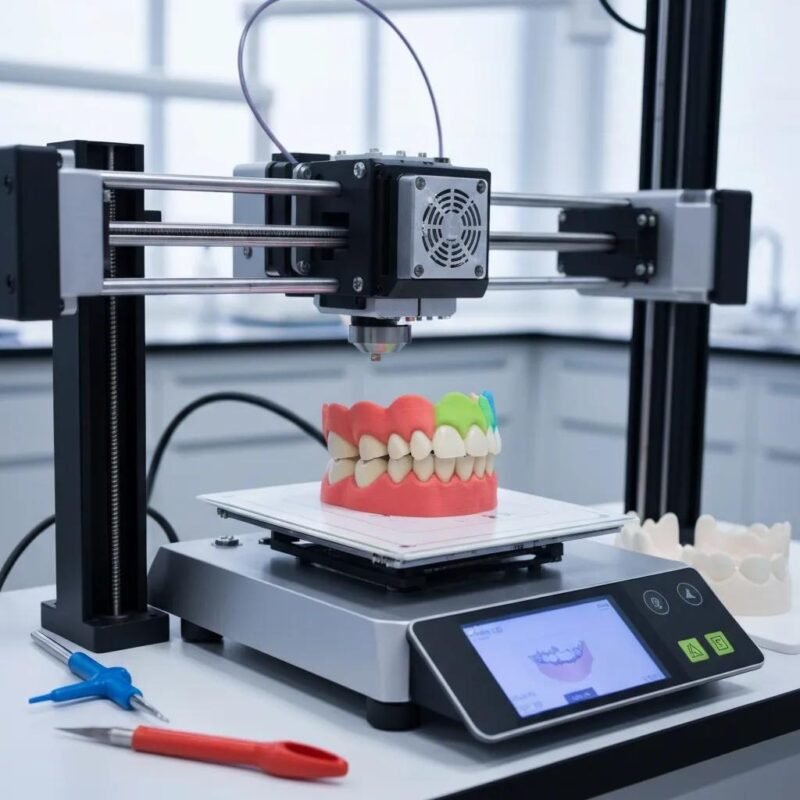
3D printing uses intraoral scans and additive manufacturing to produce custom pediatric devices—crowns, space maintainers, and appliances—with improved fit and shorter production times than many traditional lab workflows. The digital chain starts with a scan, proceeds through CAD designed for pediatric anatomy, and ends with printing in biocompatible materials—yielding appliances that need fewer intraoral adjustments and reduce chair time. For children, this translates to fewer visits, less time in the chair, and better-fitting appliances that accommodate growth; improved retention also boosts treatment effectiveness. Careful material selection and finishing ensure safety and durability, and in-office or local lab printing often enables same-day or next-day delivery.
| Device | Fit Accuracy | Typical Production Time | Common Materials | Age-Appropriate Use |
|---|---|---|---|---|
| Pediatric Crown (3D-printed) | High | Same-day to 48 hours | Dental-grade resin or ceramic composites | Primary teeth needing restoration |
| Space Maintainer (3D-printed) | High | 24–72 hours | Biocompatible resin or resin/metal hybrids | Mixed dentition to preserve arch length |
| Orthodontic Appliance (3D-printed) | High | 24–72 hours | Clear resin or plastic | Early interceptive orthodontics |
Which custom pediatric devices can be 3D-printed?
Pediatric practices can print anatomically contoured crowns for primary molars, individualized space maintainers that match intraoral scans, and custom trays or retentive orthodontic appliances for interceptive treatment. Digital design allows age-appropriate adjustments—reduced bulk, smoother margins, and tailored retention features—that improve comfort and compliance. These devices typically need fewer delivery adjustments, cutting chair time and lowering the chance of emergency visits. The ability to produce small-batch, patient-specific devices is a clear workflow advantage for pediatric-focused clinics.
How 3D printing improves fit and shortens production time
3D printing translates precise intraoral scans into digitally designed appliances that account for cusp morphology, undercuts, and soft tissues—reducing dependence on imperfect impressions and costly remakes. Additive manufacturing shortens production by bypassing casting steps, enabling same-day or next-day delivery depending on in-clinic or lab capacity. The streamlined scan→design→print workflow reduces appointment counts, which matters when treating children who tolerate fewer or shorter visits. Implementing this workflow requires investment in scanning and printing equipment and staff training, but the reduction in chair time and improved retention often justify adoption for pediatric practices.
With manufacturing and clinical techniques covered, we’ll next look at tools that enhance the pediatricpatient experience—distraction technologies and remote care options.
How tools and tech improve the pediatric patient experience
Tools such as VR headsets, child-centered instrument design, and teledentistry platforms improve the pediatric experience by lowering anxiety, expanding access, and educating families before and after visits. VR distraction can reduce perceived pain and shorten procedures by shifting a child’s attention away from treatment stimuli; friendly colors, rounded shapes, and quiet operation make instruments less threatening. Teledentistry supports remote triage, pre-visit familiarization, and follow-up checks that cut unnecessary in-person visits and help families prepare—improving scheduling efficiency. Combined, these tools create a child-centered environment that fosters cooperation, reduces the need for pharmacologic sedation, and raises satisfaction for families and staff.
Practical ways clinics can start using experience-enhancing tools right away:
- VR Distraction: Offer short, age-appropriate VR sessions for non-invasive visits to lower procedural anxiety.
- Child-Centered Aesthetics: Swap stark, clinical finishes for quieter, rounded, and colorful housings to reduce perceived threat.
- Teledentistry Triage: Use remote consultations for early screening, parental education, and follow-up to shorten chair time.
These operational changes lead to measurable behavioral improvements and set up the clinic to adopt more advanced workflows.
How VR and child-focused design lower dental anxiety
VR headsets provide immersive distraction that draws attention away from procedure-related stimuli, reducing subjective anxiety and perceived pain through engaging multisensory content. When paired with child-friendly clinic design—soft lighting, themed rooms, toys, and quieter instruments—VR’s effect increases because the overall environment signals safety and predictability. Implementing VR requires age-appropriate content, brief acclimation, and hygiene protocols for shared devices, but the setup cost is modest compared with gains in cooperation and reduced treatment time. Clinics can pilot affordable VR options for prophylaxis or sealant visits and expand as staff and patients respond positively.
How teledentistry expands access and continuity of care
Teledentistry improves access by enabling remote triage, early screening, and parent education—especially valuable for families in rural or underserved areas and for busy caregivers. A common workflow includes an initial triage call, asynchronous photo or video submission, a teledentistry consult with home-care instructions, and scheduling an in-person visit only if needed. This sequence reduces unnecessary visits and helps families prepare children both emotionally and practically for treatment. Teledentistry also supports follow-up after minimally invasive procedures, ensuring adherence to post-op guidance and reducing emergency returns. Integrating teledentistry enhances continuity and accessibility for patients facing transportation or scheduling barriers.
What future trends and industry insights should pediatric teams watch?
Future trends point to deeper digital integration—AI, intraoral scanning, and 3D printing—greater investment in minimally invasive and child-centric devices, and stronger attention to sustainability in clinic operations. Market momentum through 2024–2025 reflects rising capital into platforms that cut chair time and improve diagnostic sensitivity, which should accelerate adoption in pediatric-focused practices. Sustainability themes—reducing single-use plastics, using recyclable packaging, and choosing durable instruments—are gaining traction, though practices must balance eco-friendly choices with strict infection-control requirements. Anticipating these trends helps clinicians plan technology investments that align with clinical goals and family expectations.
Key trend themes to watch over the next 5–10 years:
- End-to-end digital integration across imaging, diagnostics, and manufacturing
- Broader adoption of AI for screening and workflow automation
- Growth in minimally invasive, non-pharmacologic care pathways
How sustainability is shaping pediatric dentistry
Sustainability in pediatric dentistry focuses on reducing waste where safe, sourcing materials with lower environmental impact, and optimizing sterilization cycles to minimize disposable use without compromising infection control. Clinics can adopt incremental changes: choose longer-lasting instruments, prefer recyclable packaging for consumables, and partner with labs that use eco-conscious manufacturing. Trade-offs include ensuring reusable options meet pediatric safety standards and that disposables remain available when infection-control demands it. Thoughtful, evidence-based procurement and staff training let clinics introduce green practices gradually while maintaining patient safety.
What market growth and investments are expected by 2025?
Through 2025, investment is expected to continue toward digital dental technologies—AI diagnostics, intraoral scanning, and 3D printing—driven by gains in efficiency, diagnostic sensitivity, and patient experience. As manufacturers add pediatric-specific features and scale production, device prices will likely become more accessible for community practices. For clinicians, a phased adoption strategy makes sense: begin with high-impact tools like intraoral scanners or key minimally invasive devices, then layer in AI and in-office printing as volume and budget permit. Tracking market indicators and vendor roadmaps will help practices time purchases to clinical priorities and patient needs.
For clinicians and families who want reliable, deeper guidance, authoritatve sources such as the American Academy of Pediatric Dentistry and the National Institute of Dental and Craniofacial Research publish clinical guidelines and research syntheses. To stay current on innovations and operational best practices, subscribe to specialty newsletters and resource hubs focused on pediatric dental technology and patient experience. Downloadable infographics and checklists summarizing minimally invasive options, device selection criteria, and age-appropriate appliance types are useful tools for patient education and practice planning.
Explore our related innovation hub content, download a pediatric dental tech checklist or infographic for use in practice, and subscribe for updates on market developments and clinical guidance for child-centered dental care.
Frequently Asked Questions
What role does ergonomics play in pediatric dental instruments?
Ergonomics is a core design principle for pediatric instruments: it helps clinicians work with better control and less fatigue while making instruments more comfortable and less intimidating for children. Properly sized grips, balanced weight, and shortened shanks allow more precise movements in small mouths—improving clinical outcomes and creating a more positive experience that encourages return visits.
How can technology improve the efficiency of pediatric dental practices?
Technology streamlines workflows and shortens appointments. Intraoral scanners eliminate messy impressions, AI speeds image review and triage, and in-office 3D printing can cut appliance turnaround times. Together these tools raise patient throughput, reduce chair time, and improve family satisfaction—especially helpful in pediatric settings where attention spans are limited.
What are the benefits of using distraction techniques during pediatric dental procedures?
Distraction methods—like VR, tablets, or engaging toys—reduce anxiety and perceived pain by redirecting a child’s focus during treatment. Studies and clinical experience show that distracted children tend to be calmer, more cooperative, and report less discomfort, which smooths appointments and can reduce the need for more invasive behavior management measures.
How does teledentistry enhance access to pediatric dental care?
Teledentistry improves access by allowing remote triage, early screening, and follow-up—valuable for families in rural areas or with limited time. Parents can share photos or short videos for an initial assessment, get home-care guidance, and then schedule an in-person visit only if necessary. This approach saves time, helps prioritize care, and supports continuity after minimally invasive treatments.
What are the implications of sustainability in pediatric dentistry?
Sustainability means reducing waste and choosing materials with lower environmental impact while maintaining strict infection control. Practical steps include selecting durable instruments, preferring recyclable packaging when available, and optimizing sterilization cycles. Implementing green practices should be incremental and evidence-based so that patient safety remains the priority while reducing the clinic’s environmental footprint.
What future trends should pediatric dentists be aware of?
Pediatric dentists should watch continued integration of digital workflows (AI, scanning, 3D printing), expanded use of minimally invasive treatments, and growing emphasis on sustainable clinic practices. Staying informed about these trends helps practices choose investments that improve diagnostic accuracy, efficiency, and patient experience over the coming years.
Conclusion
Advances in pediatric dental instruments and workflows are making care gentler, more precise, and more predictable for children. Child-specific designs and modern technologies—when chosen thoughtfully—reduce anxiety, shorten visits, and preserve tooth structure, all while improving clinical outcomes. For clinicians and clinic leaders, aligning investments with pediatric goals and family expectations will deliver measurable benefits in patient experience and practice efficiency. Explore our resources to keep up with the latest tools and practical tips for child-centered dental care.



